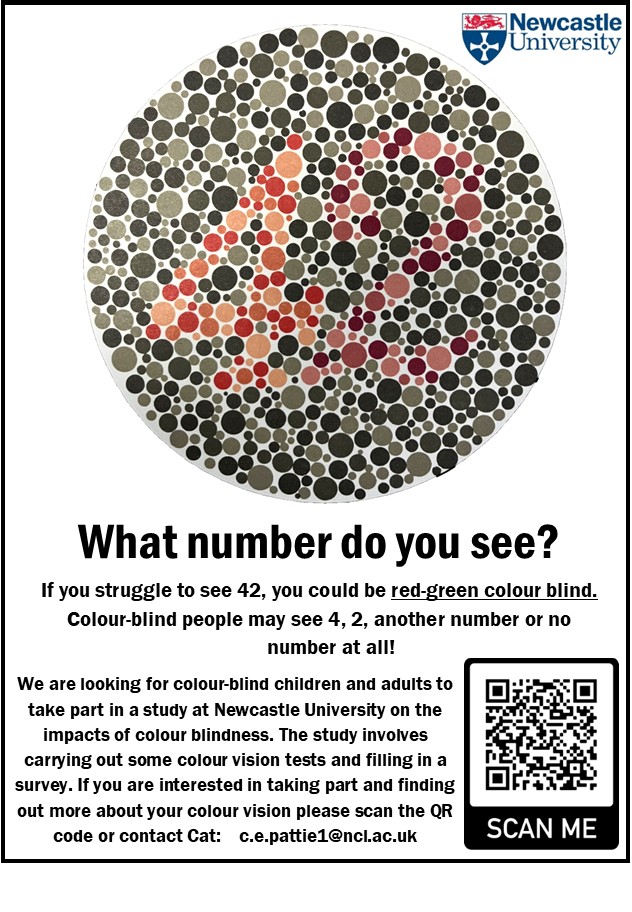At Newcastle University Biosciences Institute, we are running a project to investigate the educational and wider impacts of red-green colour blindness. We are looking for colour-blind children and adults to take part in a study which involves coming to Newcastle University Medical School, carrying out some colour vision tests and completing a survey.
Volunteers have the opportunity to learn about colour vision and learn detailed information about their own colour vision. If you are interested in taking part, or for more information, contact Cat at c.e.pattie1@newcastle.ac.uk, or click here: https://nclpsych.eu.qualtrics.com/jfe/form/SV_cT6QB7Kov8s1IFw
About Colour Blindness
For most people, colour vision arises from the responses of three types of colour-sensitive cells in the eye: one sensitive to short-wavelength light (appearing blue; S-cones), one sensitive to middle-wavelength light (appearing green; M-cones) and one sensitive to long-wavelength light (appearing red; L-cones). Red-green colour-vision deficiency (CVD) involved one of the latter two cell types and is more commonly known as colour blindness. It is a hereditary condition affecting 8% of males and 0.4% of females. In milder forms, either the M-cones or the L-cones are shifted in the wavelengths of light they respond to. In more moderate-severe forms, either the M-cone or L-cone is missing. Depending on type and severity, a colour-blind individual’s ability to discriminate between colours can be significantly compromised. The impacts of colour blindness often include issues at work, problems watching and participating in sports, difficulties interpreting colour-coded information, and learning at school.
In recent decades, colour has become an increasingly relied-upon tool within the classroom, but little research has been conducted on the impact of this change on the educational experiences and outcomes of colour-blind students. However, it is reasonable to assume that a number of colour-blind children will have difficulties making use of colour-based facilities and learning materials in schools which are accessible to their peers with normal colour vision. For example, colour is used in traffic light systems for task feedback, colouring tasks, educational games, worksheets, and on interactive whiteboards (source: www.colourblindawareness.org). Despite the high prevalence of the colour-blindness and the potential for adverse effects on education, colour-blindness is not routinely screened for, meaning those affected may remain undiagnosed, unable to develop educational coping strategies and plan suitable career options.

Flowers on Newcastle University campus seen with normal colour vision (right) and severe red-green colour blindness (left). Simulation made with Coblis Color Blindness Simulator.




















